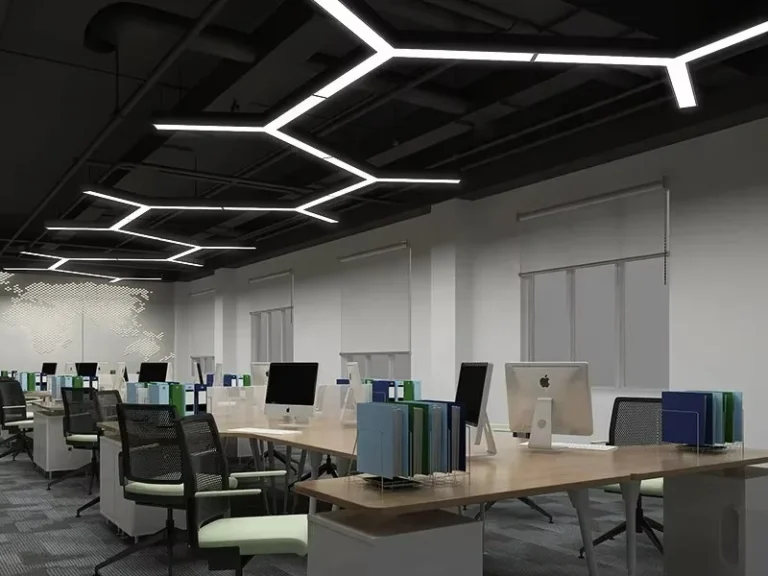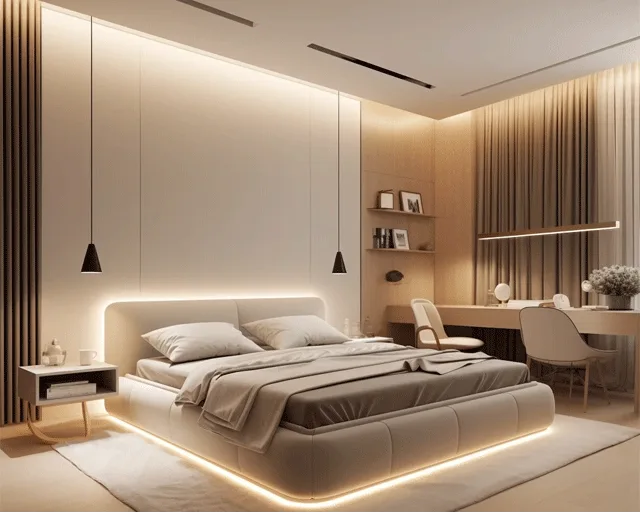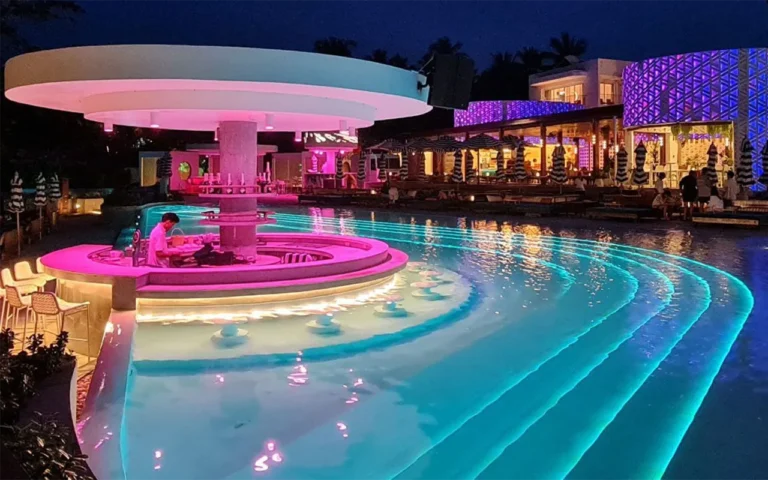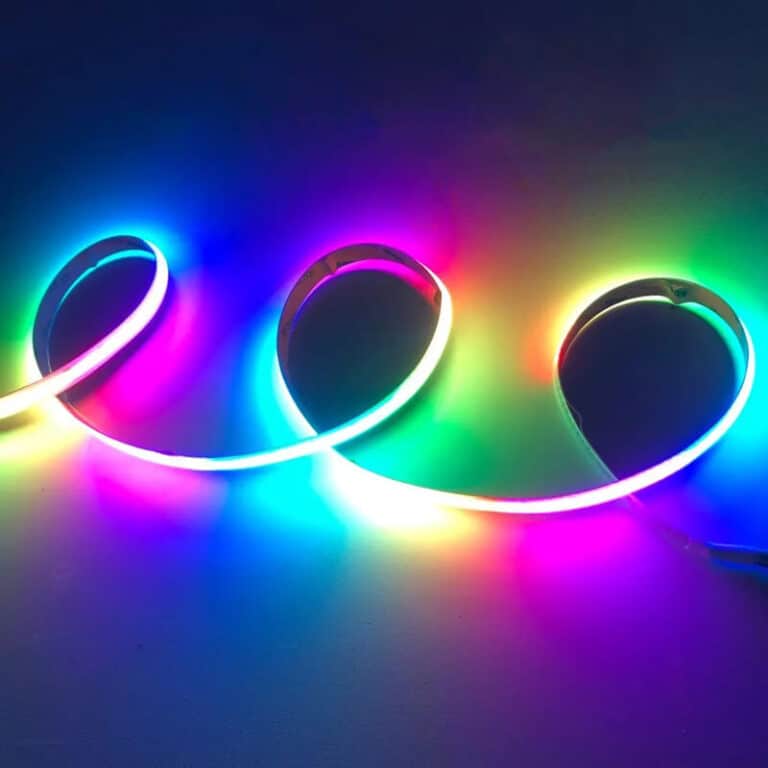Em iluminação comercial e design de casa, as luzes lineares LED são amplamente populares por seu design elegante e distribuição uniforme de luz. No entanto, negligenciar a classificação de brilho unificado (UGR) pode levar à fadiga visual ou até mesmo riscos de segurança. Podemos obter uma experiência confortável de “ver luz sem ver a fonte de luz” selecionando cientificamente a iluminação apropriada.
De acordo com os padrões internacionais, diferentes cenários têm requisitos claros para a UGR. Os escritórios e as salas de aula geralmente exigem UGR≤19, enquanto algumas salas de exposições e hospitais de alto padrão têm requisitos mais altos para UGR, exigindo UGR≤16. Portanto, a UGR tornou-se um fator importante que não pode ser ignorado na compra de luzes lineares LED.
As luzes lineares LED podem atingir uma UGR inferior a 19?
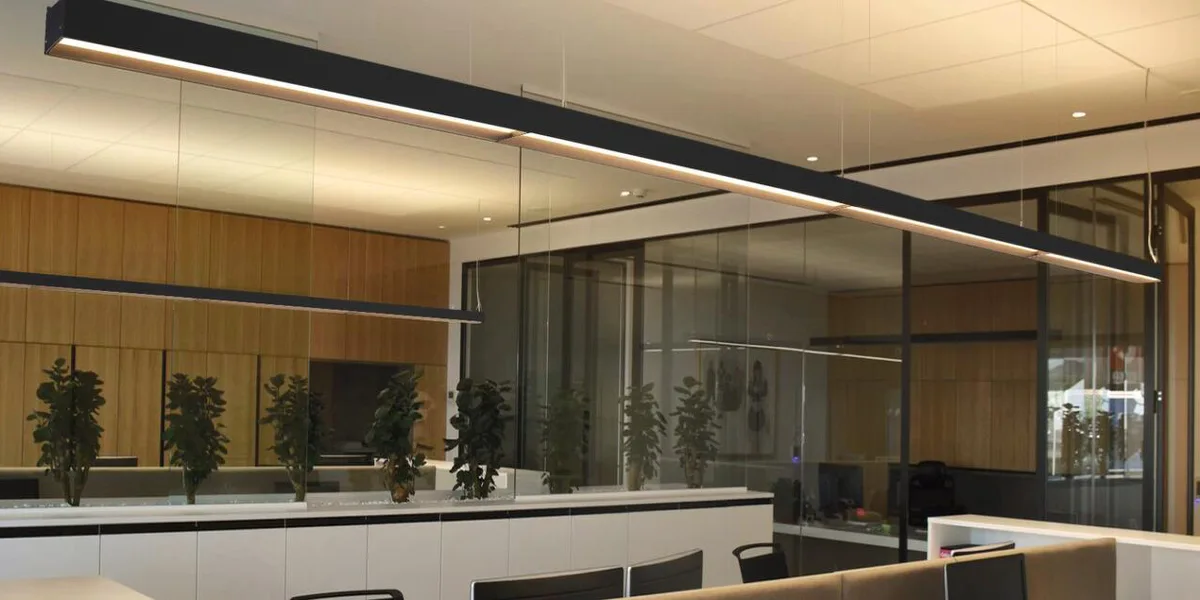
Sim, luzes lineares led Pode atingir uma UGR inferior a 19. A classificação unificada de brilho (UGR) é um parâmetro chave para medir o efeito de brilho da iluminação. Ambientes de iluminação saudável, como escritórios, exigem uma UGR inferior a 19 para garantir o conforto visual. Por exemplo, as luzes lineares LED projetadas especificamente para o brilho baixo podem estabilizar o valor UGR abaixo de 19 por meio de materiais ópticos antirreflexo microestruturados, que atendem aos padrões de iluminação do edifício.
No entanto, como fonte de iluminação direta, as luzes lineares podem representar riscos de brilho se projetadas incorretamente. Conforme mostrado nos dados reais de medição abaixo, seus valores de UGR podem atingir 22, excedendo o limite superior recomendado pelo CIE, levando a desconforto, como contração frequente da pupila e dores de cabeça. Portanto, ao selecionar produtos, é aconselhável priorizar aqueles que estão explicitamente rotulados como atendendo aos requisitos da UGR.
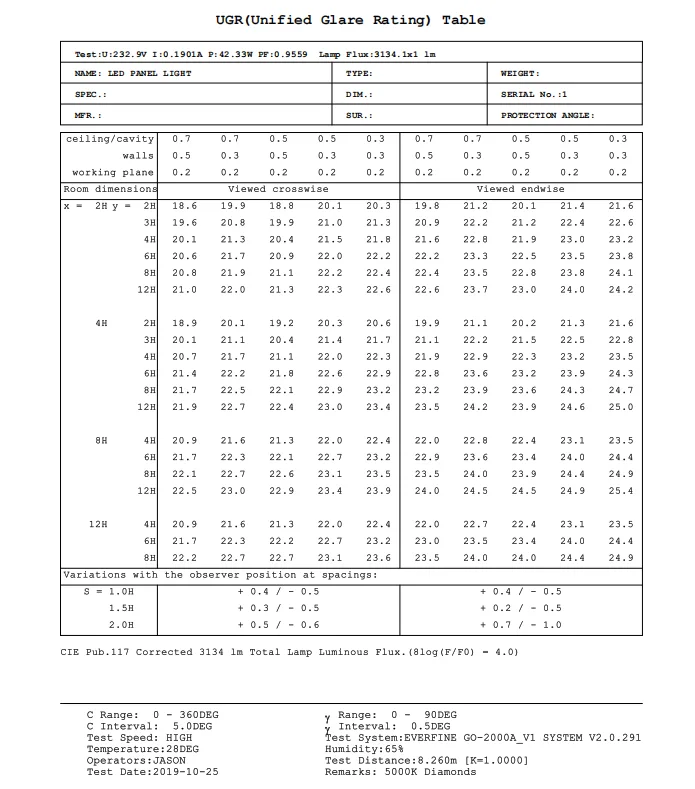
Por que a classificação de brilho (UGR) das luzes lineares deve ser inferior a 19?
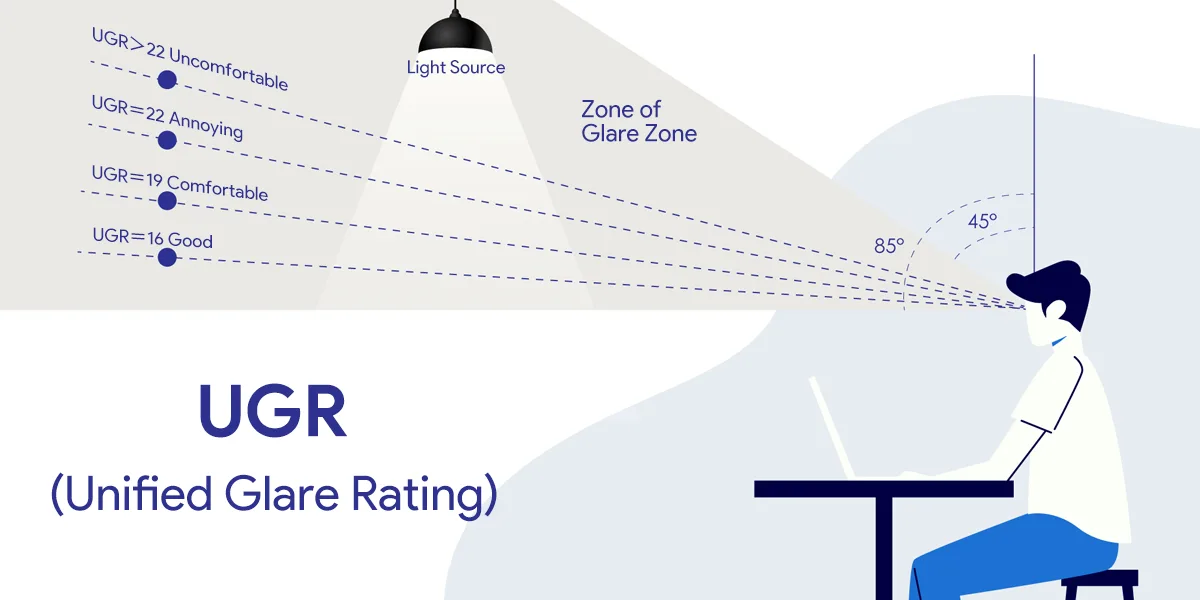
A UGR (Uniform Glare Rating) é um padrão reconhecido internacionalmente para avaliar o nível de brilho da iluminação linear interna. Quanto menor o valor da UGR, mais fraco o brilho e maior o conforto visual. O valor UGR é influenciado por vários fatores, incluindo brilho, posição e níveis de luz ambiente.
Quando UGR excede 19, as pupilas se ajustam frequentemente, levando à fadiga visual. A exposição prolongada pode causar danos à retina, deterioração da visão e aumento do risco de catarata. Só na China, onde mais de 60% de adolescentes sofrem de miopia, a poluição por brilho foi identificada como um dos principais fatores que contribuem.
Os padrões atuais exigem que os valores de UGR em ambientes de iluminação saudável sejam inferiores a 19. O requisito para que o UGR seja inferior a 19 é principalmente baseado nos seguintes motivos:
- Garantindo o conforto visual: Um valor de UGR de 19 marca o limite entre o brilho moderado e significativo. Quando UGR ≥ 19, a sensação de luz ofuscante aumenta significativamente, causando potencial fadiga visual ou desconforto. No entanto, quando o UGR < 19, o brilho permanece dentro de uma faixa aceitável, tornando-o adequado para ambientes como escritórios e salas de aula onde é necessário um foco prolongado.
- Adequação aos requisitos do local de trabalho: Em áreas de escritório e outros ambientes que exigem tarefas visuais precisas, o UGR ≤ 19 equilibra a iluminância e o conforto, evitando o brilho de interferir na eficiência do trabalho. Por exemplo, o padrão GB50034-2013 estipula explicitamente que o limite superior da UGR para áreas de escritórios gerais é 19, simulando a experiência confortável de ambientes de luz natural.
- Distinção de cenários de aplicativos: O design graduado dos valores da UGR considera os níveis de tolerância de diferentes locais—UGR < 19 é adequado para ambientes de alta demanda (como escritórios), enquanto UGR ≥ 19, que causa ofuscamento perceptível, é recomendado apenas para instalações industriais ou lojas onde os requisitos de conforto visual são menores.
Como é avaliado o valor da UGR?
A classificação de conforto do valor UGR (classificação uniforme de brilho) foi claramente definida pelos padrões internacionais. Os limites de conforto específicos e os cenários aplicáveis são os seguintes:
Quando UGR < 13, a luz é suave e o olho humano mal consegue perceber o brilho. Isso é adequado para espaços com requisitos de conforto visual extremamente elevados, como galerias de arte e residências de alto padrão.
Quando UGR < 16, ele se enquadra na faixa de conforto, com um leve brilho que não prejudica as tarefas visuais. Este é o padrão recomendado para salas de aula, salas de leitura e outros ambientes que exigem trabalho preciso. Por exemplo, as luzes do painel protetor ocular nas salas de aula devem controlar a UGR ≤ 16 para proteger a visão dos adolescentes.
Valor da UGR e classificação do estado de percepção humana
| Faixa UGR | percepção humana | Exemplos de cenários aplic |
| ugr < 13 | Sem brilho perceptível | Hospitais, salas de exposições de alto nível, instituições especiais |
| 13 ≤ UGR ≤ 16 | brilho suave | Hospitais, centros de atividades para idosos |
| 16 ≤ UGR < 19 | Ofuscamento moderado, aceitável, mas pode causar fadiga | Escritórios comuns, salas de reuniões |
| 19 ≤ UGR < 22 | Limite para desconforto perceptível | plantas industriais, armazéns |
| UGR ≥ 22 | O brilho intenso, causando dores de cabeça | Evite ocupação prolongada de humanos |
O limiar psicológico entre o conforto e o desconforto é URG = 19, mas ambientes visuais saudáveis (como espaços de aprendizagem) devem apontar para UGR ≤ 16.
Padrões obrigatórios para cenários de aplicação:
- instalações educacionais: UGR obrigatório ≤ 19 para salas de aula; soluções de iluminação de alta qualidade devem ser otimizadas para ≤ 16;
- Ambientes de escritório: UGR > 19 causa contração frequente da pupila, levando à fadiga visual, sendo a pontuação qualificada é ≤ 19;
- locais industriais: UGR ≤ 22 é permitido, mas acessórios antirreflexo devem ser usados para reduzir os riscos à saúde.
Recomendações de prática de proteção contra ofuscamento
| medidas | princípios técnicos | Efeito de redução de URG |
| Painel de difusão do microprisma | Decompõe os feixes de luz de alta intensidade | Reduz para ≤16 |
| Design de iluminação indireta | Evita a zona de interferência de 30° ao redor do olho humano | Reduz em 30% |
| Materiais de baixo brilho | Reduz o brilho do reflexo ambiental | Otimiza em 2 a 3 pontos |
Nota: As medições UGR requerem um fotômetro distribuído com uma lente olho de peixe; é necessária uma calibração se o erro exceder ±10%.
Requisitos da UGR para iluminação linear na Europa e nos Estados Unidos
A Europa e os Estados Unidos têm padrões claros de classificação para os requisitos da UGR para iluminação linear LED. Os regulamentos específicos e os pontos de implementação são os seguintes.
Padrões obrigatórios de classificação de UGR
padrões da UE: Toda iluminação linear interna deve atender ao limite mínimo de segurança de UGR ≤ 19. Exceder este valor resultará na falha na obtenção da certificação CE. Os locais especiais têm requisitos mais rígidos: áreas de educação/escritório: UGR deve ser ≤16, como salas de aula e escritórios abertos; galerias de arte/instalações médicas: UGR deve ser ≤13, e estruturas antirreflexo em favo de mel devem ser usadas.
Requisitos Especiais da América doOs padrões UL 1598 exigem explicitamente luminárias LED para controlar os riscos fotobiológicos (excluindo a banda de comprimento de onda de 4400-780 nm); a certificação Energy Star exige que as luminárias comerciais tenham UGR ≤ 22 e devam indicar níveis de luz azul (o nível de isenção RG0 é priorizado).
Especificações de aceitação da medição UGR
| Item | Normas da UE | Requisitos suplementares da América do Norte |
| Altura da observação | 1,2 m / em pé 1,5 m | Adere ao padrão CIE 117-1995 |
| Equipamento de medição | 143° Campo de visão Medidor de luminância de imagem | Deve passar pela calibração fotométrica UL |
| Correção de brilho do fundo | Elimina a interferência direta da luz dos acessórios | Adiciona item de detecção de reflexão de espelho |
Comparação dos padrões da UGR entre a Europa e a América do Norte
| Indicador | UE | América do Norte |
| Força de fiscalização | UGR > 19 proibido de circulação de mercado | Execução voluntária da certificação Energy Star |
| Foco Técnico | Controle de brilho (UGR) como foco principal | Segurança fotovoltaica + controle duplo de eficiência energética |
| Direção de atualização | Implemente o UGR ≤ 16 até 2025 | Reforce os padrões de segurança para acessórios de bateria de botão (UL4200A) |
| Limites básicos | UGR ≤ 19 Limiar obrigatório (requisito básico de certificação CE) | Nenhum limite obrigatório de nível federal; o Energy Star recomenda ≤ 22 |
| Requisitos especiais do cenário | Educacionais/Médicos UGR ≤ 13 | Iluminação industrial permitida UGR ≤ 25 (deve atender aos padrões de segurança elétrica UL 1598) |
ótico Parâmetro Cencanto
- UE: Uso obrigatório de um medidor de luminância de campo de visão de 143° para eliminar a interferência da luz direta da luminária;
- América do Norte: Deve passar o equipamento de calibração fotométrica UL e adicionar detecção de reflexão do espelho.
Referência de observação
- A UE adota uniformemente uma altura de assento de 1,2 m/altura de 1,5 m para o nível dos olhos;
- A América do Norte se alinha com os padrões da UE, mas permite que os fabricantes definam suas próprias alturas de teste (sujeito a registro).
Os países europeus implementarão requisitos obrigatórios para tetos espelhados com cobertura UGR≤16 (incluindo espaços comerciais) a partir de 2025.: Brilho da superfície da luminária ≤2000 cd/m²; abajures foscos com refletância <60%.
As luminárias com controle sem fio devem estar em conformidade com: Certificação de radiofrequência FCC (47 CFR parte 15) e os acessórios de bateria de botão de botão devem estar em conformidade com UL 4200A3.
Alerta de tendência: Os novos regulamentos da UE em 2025 incorporarão a segurança fotobiológica (RG0) no sistema de avaliação da UGR, e a América do Norte atualizará simultaneamente os padrões de controle de luz azul UL 153.
Como medir o valor da UGR das luzes lineares LED?
O valor da UGR de luzes lineares led É comumente medido usando um goniofotômetro, que pode obter dados fotométricos e simular cálculos usando o software padrão. A seguir, são os procedimentos específicos de teste e os pontos-chave:
Fixe a luminária linear na montagem rotativa do goniofotômetro. Ao girar a luminária ou o refletor, capture os dados de distribuição da intensidade da luz em um espaço de 360°, gerando um arquivo fotométrico de formato IES contendo parâmetros como fluxo luminoso e distribuição da intensidade da luz.
Luzes lineares longas normalmente pertencem à categoria de luminárias simétricas biaxialmente (por exemplo, luzes longas do painel), exigindo o teste das curvas de distribuição de luz para dois planos simétricos: o plano longitudinal (C0-C180) e o plano transversal (C90-C270).
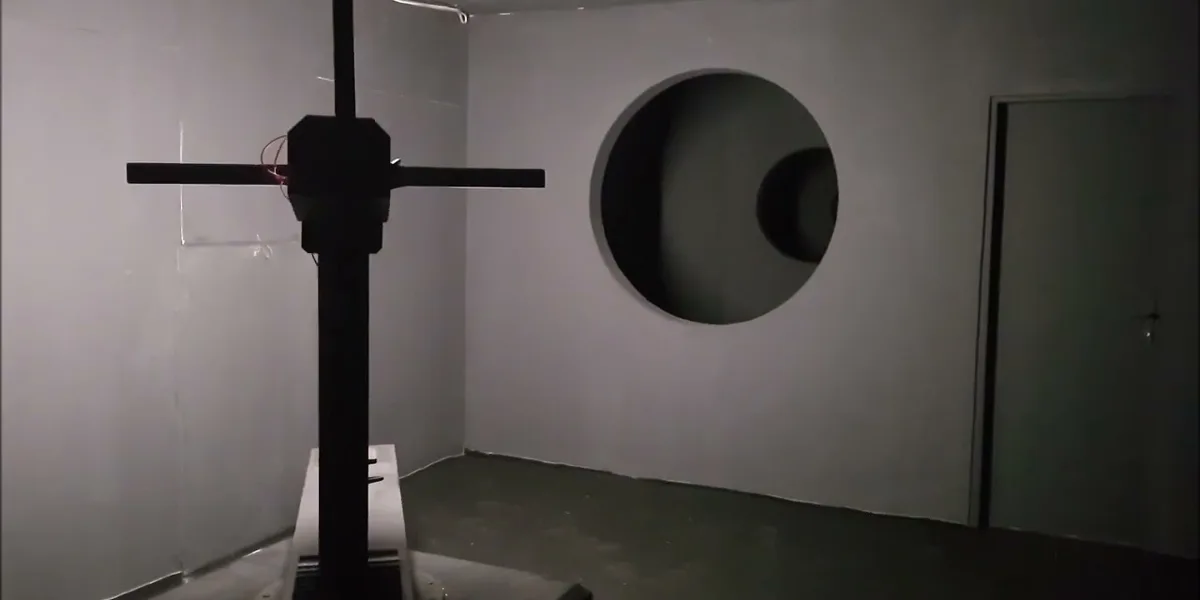
validação de dados
Certifique-se de que o arquivo IES contém informações completas sobre distribuição de luz (como ângulo de pico de pico e ângulo de espalhamento de feixe), e que o ângulo sólido luminoso ω da luminária está na faixa de 0,0003 a 0,1 SR para atender às condições de cálculo do UGR.
Importando o arquivo IES para o software de simulação
Ao carregar o arquivo IES de uma luminária linear em software profissional como Dialux, confirme se o arquivo está em um formato totalmente simétrico ou biaxialmente simétrico (assimetr luminárias não podem gerar tabelas UGR). Se o arquivo IES não se adaptar automaticamente, ajuste a simetria usando uma ferramenta de correção.
Configurar o ambiente de simulação padrão
De acordo com os padrões da CIE 117-1995, construa uma sala virtual e defina os principais parâmetros:
- Dimensões do espaço: ajuste o comprimento e a largura dinamicamente de acordo com x=2h, 4h, 8h, 12h (onde h é a altura dos olhos do observador até a altura da instalação da luminária);
- reflexo: insira os coeficientes reais de refletância para o teto e as paredes (valores padrão: teto 0,7, paredes 0,5);
- Posição do observador: Mantenha uma linha horizontal de visão, com uma distância padrão do ponto central da luminária.
- Gerando a tabela e correção da UGR: O software emite a “Tabela de Avaliação de Iluminância de UGR de Referência” (tabela UGR não corrigida), que representa os valores teóricos da fonte de luz nua em um fluxo luminoso de 1000 lm.
- Fórmula de correção real do UGR: UGR real = valor da tabela + 10 × log (fluxo de luz real da luminária / 1000). Por exemplo, quando o fluxo de luz da luminária for 2.000 lm, adicione 3 ao valor da tabela (10 × log₂ ≈ 3).
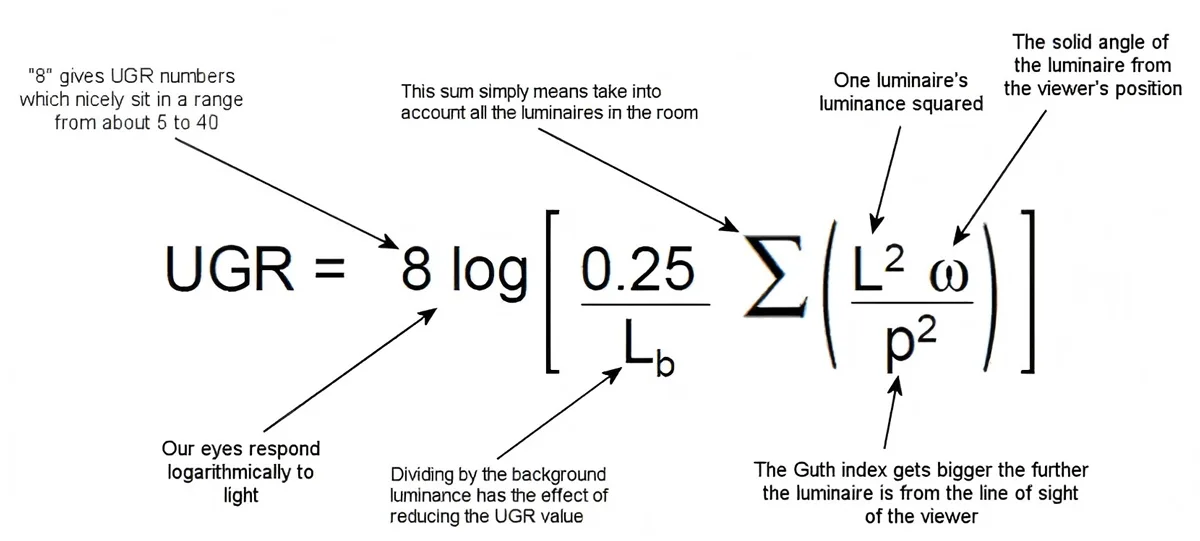
- Limitações do aplicativo: A UGR é aplicável apenas a ambientes internos e luminárias simétricas bilateralmente; luminárias lineares com designs polarizados (como luminárias de lavagem de parede de distribuição não simétricas) não podem ser avaliadas diretamente usando este método.
- Diferenças entre os resultados medidos e a simulaçãoOs resultados da simulação são valores de referência ambiental padrão; as instalações reais são influenciadas por dimensões espaciais, materiais reflexivos, etc.
Como reduzir efetivamente o valor da UGR das luzes lineares?
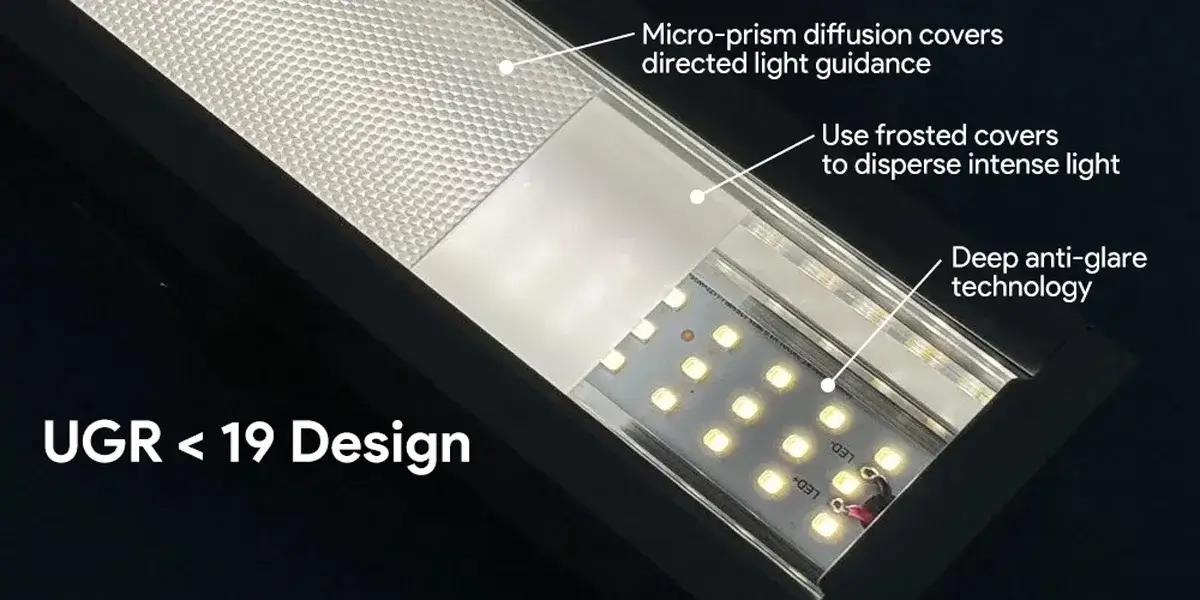
- Otimização da estrutura óp: Adote um design de ângulo de brilho e uma tecnologia anti-reflexo profunda, com um ângulo de brilho de ≥25 cm para impedir que a luz direta chegue aos olhos. Para ambientes industriais, é recomendável instalar as luzes a uma altura de ≥3,5 m e combiná-las com refletores para reduzir o brilho.
- superfície Ttratamento Ttecnologia: Use uma malha antirreflexo em favo de mel para enfraquecer os reflexos perdidos, obtendo uma redução de 30% na UGR (especialmente adequada para ambientes de alta refletividade); Alternativamente, use abajures foscos/foscos para dispersar a luz intensa, garantindo uma difusão leve uniforme, com uma refletância da superfície de <60%;
- micro-Prebordo DSe a fusão Panels: Orientação de luz direcionada, reduzindo o UGR de 21 para 14.
- Instalação e Layout Ccontrolo: Priorize a instalação embutida para evitar lâmpadas expostas; luzes lineares devem ser incorporadas em tetos ou paredes (profundidade incorporada ≥2 cm); quando montadas na superfície, as lentes polarizadas devem ser usadas para direcionar a luz para a superfície de trabalho. As lâmpadas não devem ser colocadas a 30° do nível dos olhos (uma altura de ≥1,8 m acima do solo é mais segura); tetos espelhados devem ser emparelhados com abajures foscos para suprimir reflexões secundárias.
- Controle de material de parede: Use tinta fosca (refletância <60%), evitando materiais de alta reflexão, como paredes ou azulejos brancos; instale slots de luz reflexiva curva para converter luz direta em luz difusa (medida UGR reduzida de 21 para 13).
- RG0-Lnível Blue Lluz Ccontrolo: Use fontes de luz de espectro total para reduzir a estimulação fotobiológica;
- esperto Dinsensível Ssistema: Reduza dinamicamente o contraste em áreas de alto brilho (deve ser certificado FCC/CE).
- notas: As lâmpadas LED transparentes são fontes de luz expostas e podem causar brilho severo; evite arranjos densos de alta potência, com espaçamento entre lâmpadas ≥ 1,5 vezes a largura da luminária; superfícies reflexivas, como móveis espelhados, mesas e telas devem ser compensadas pelo ângulo de projeção da luminária.
- Efeito Verificação: Meça o valor corrigido do UGR usando um medidor de luminância de campo de visão de 143° para garantir ≤19 (escritório) ou ≤13 (médico/educacional).
Além disso, para atender à UGR ≤19, os projetos de iluminação devem empregar o controle de tecnologia tripla:
- ótico Dconceção: Usar placas de difusão leves microestruturadas para reduzir o brilho da superfície;
- estratégia: Evitar a zona de interferência do olho humano (dentro de um campo de visão ascendente de 30°);
- Material Seleição: Use materiais de baixo brilho para reduzir o brilho reflexivo. Por exemplo, a iluminação da sala de aula é obrigatória para ter UGR ≤ 19 (Padrão Nacional GB7793-2010), enquanto os acessórios de alta qualidade (como iluminação pública) são otimizados para UGR ≤ 16.
- Otimização óp: Instalar painéis de difusão de micro-prisma: UGR pode ser reduzido de 21 para 14; use lentes polarizadas: as configurações industriais permitem UGR ≤ 25, mas devem ser emparelhadas com paredes com uma refletância de ≤ 60%.
- tabus de instalação: Proibir estritamente a colocação de lâmpadas nuas dentro do campo de visão horizontal de 30° do olho humano; uma altura de 1,8 metros acima do solo é mais segura; em configurações de teto espelhado, devem ser usados abajures foscos.
As quatro vantagens principais da Luz Linear Linear Signliteled
Desempenho óptico: Apresentando um design de redução de brilho com UGR < 19, a luz é uniformemente difundida por meio de um painel de difusão prismático, complementado por um sistema de lente óptica de alta precisão que controla efetivamente a nitidez do limite do ponto de luz, alcançando padrões de supressão de brilho de nível de museu.
Projeto estrutural de nível industrial: Construído com perfis de liga de alumínio de nível aeroespacial e tecnologia de nano-revestimento, possui uma classificação de proteção IP66, capaz de suportar ambientes extremos de -30°C a 60°C. Sua estrutura inovadora de montagem modular suporta ajustes multidimensionais de 0° a 90°, acomodando a instalação em espaços curvos ou irregulares.
esperto Ecosistema EUsúbito: driver de protocolo duplo DALI/PWM integrado, compatível com os sistemas de controle inteligentes convencionais. A tecnologia de dissipação de calor de grafeno atinge mais de 93% Conversão de eficiência energética, combinada com uma vida útil de mais de 50.000 horas, economizando mais de 40% de energia em comparação com as luminárias tradicionais.
diferenciado Valuvião: O produto é certificado pela CE e RoHS, oferecendo uma garantia de 5 anos. Os sistemas de serviço personalizados podem acomodar a temperatura de cor especial (ajustável de 2700K a 6.500K) e os requisitos do índice de renderização de cores (RA ≥ 95) para espaços comerciais, galerias de arte e outros cenários.
Com seu excelente desempenho óptico, estrutura durável de nível industrial, compatibilidade de controle inteligente e serviços altamente personalizados, Signlited's luzes lineares led Tornaram-se a escolha ideal para iluminação arquitetônica moderna e espaços comerciais de alta qualidade. Esteja você realizando um novo projeto de construção ou uma atualização de iluminação, a Signlitelded pode fornecer soluções de iluminação mais eficientes, inteligentes e mais orientadas para o design.

